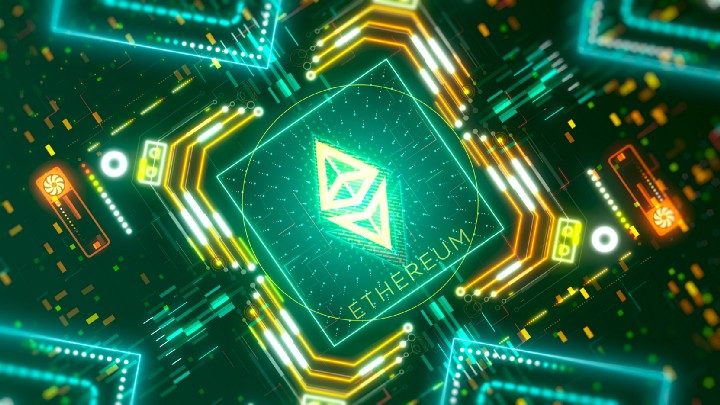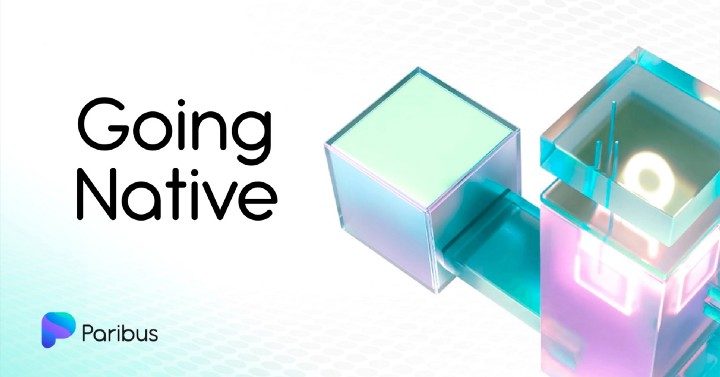A question that comes up regularly is when Paribus will transition to Cardano. Although we’ve answered this many times we recognize that every week new people join our community so we thought we’d take the time to cover the fundamentals of this issue once more.
The first question we are often asked is why Paribus is an Ethereum-based token and platform if we’re building for Cardano. The reason is that when we launched our PBX token one year ago it was very difficult to access developers who could write code for Cardano. The quickest solution to establish our minimal viable product (MVP) was to begin on Ethereum as there were more development teams that could write in Solidity.
Knowing that IOG, the company tasked with developing Cardano, was developing an Ethereum Virtual Machine (EVM) compatible side chain it seemed obvious that we’d be able to transition to Cardano after launching our MVP. The alternative would have delayed our progress while we waited to find a suitable Plutus development team. So we chose the fastest route to market whilst being able to ensure that we didn’t compromise our security requirements.

Our goal has always been to bring liquidity to Cardano, therefore it also made sense to launch on Ethereum as this would help to bring liquidity across. If we began on Cardano we wouldn’t necessarily be adding to the liquidity on the base layer.
As Deniz, our CEO explained in our recent Twitter Spaces Town Hall, “We position Paribus as a cross-chain, borrowing and lending platform specifically because we want to bring liquidity from different chains onto this platform that we’re building…and bring that liquidity into the Cardano ecosystem. Our main goal is to bring liquidity to the Cardano ecosystem through layer 2 solutions…In the near future, IOG itself is building an EVM-compatible side chain, so we will probably live on that.”
Another aspect of transitioning to Cardano is that we have two different parts to Paribus, namely the decentralized application, or DApp, and the PBX token. As both currently reside on Ethereum there are different approaches for each element.
For the DApp, which is presently in its MVP iteration, we are waiting for the necessary conditions to be able to launch it on Milkomeda as well as our present route to market through Arbitrum. Arbitrum is a specific type of layer 2 solution for Ethereum called an optimistic roll-up. Milkomeda on the other hand has an EVM-compatible side chain for the Cardano blockchain.
In order for the MVP to function it needs live pricing data on all the assets it will interact with. These are provided in the form of pricing oracles and subgraphs which are presently available on Arbitrum but not yet available on Milkomeda.
As Deniz went on to explain, “The only thing that’s stopping us from launching on Milkomeda is the fact it doesn’t have an oracle nor does it have a subgraph provider or indexer yet. These are the two components that we have to have to be able to run the platform effectively. So as soon as those two things come into play on Milkomeda’s side, we’ll be able to launch there. Once we’re on there we are effectively bridged between EVM and Cardano using that L2.”
If we keep the MVP and later iterations programmed in Solidity it means that we can then transition Paribus across to any other blockchain that has an EVM-compatible sidechain with oracles and subgraphs. Alternately we may in the future completely rewrite the DApp in Cardano’s native language, Plutus. This could then be deployed on other chains that have Plutus-compatible sidechains.

As Deniz described, “Depending on how things go…in the near future…we may actually transition to a full Plutus solution. But even with a Plutus solution we always want to position ourselves as a cross-chain borrowing and lending platform. So we will always coexist on multiple chains to essentially meet our goal of becoming that cross-chain protocol.”
With respect to our PBX token, this is presently an Ethereum-based ERC-20 token. Most of the issues around wanting this to be a Cardano Native Token relate to the high gas fees that ERC-20 tokens incur when you move them or use them with a smart contract.
Wilson, our COO explains what we’ve done so far to mitigate this issue, “We have Multichain as our partners, for the PBX token itself, to be able to migrate that to multiple blockchains at the moment. So that’s a little bit different, but we have that functionality for the PBX token already.”
Simon, our CTO explains what will happen to the ERC-20 PBX tokens if we create a Cardano native PBX token, “Right now we already have PBX on Milkomeda, but given that we want to have a multi-chain approach, Ethereum PBX will always exist. So even if you vanish for a year and come back, you will still have your Ethereum PBX and you will still be able to trade them, bridge them and use them for other utilities.”
We don’t believe the future of crypto is finding one chain to rule them all. Instead, we prefer to focus on maximizing our utility across as many chains and assets as we can. We’re in the early stages of what we all hope will be an expansive and inclusive project, building for Cardano and bringing as much liquidity as possible to its ecosystem.
Join Paribus-
Website | Twitter | Telegram | Medium | Discord
- Coinsmart. Europe’s Best Bitcoin and Crypto Exchange. Click Here
- Platoblockchain. Web3 Metaverse Intelligence. Knowledge Amplified. Access Here.
- Source: Plato Data Intelligence: Platodata.ai

